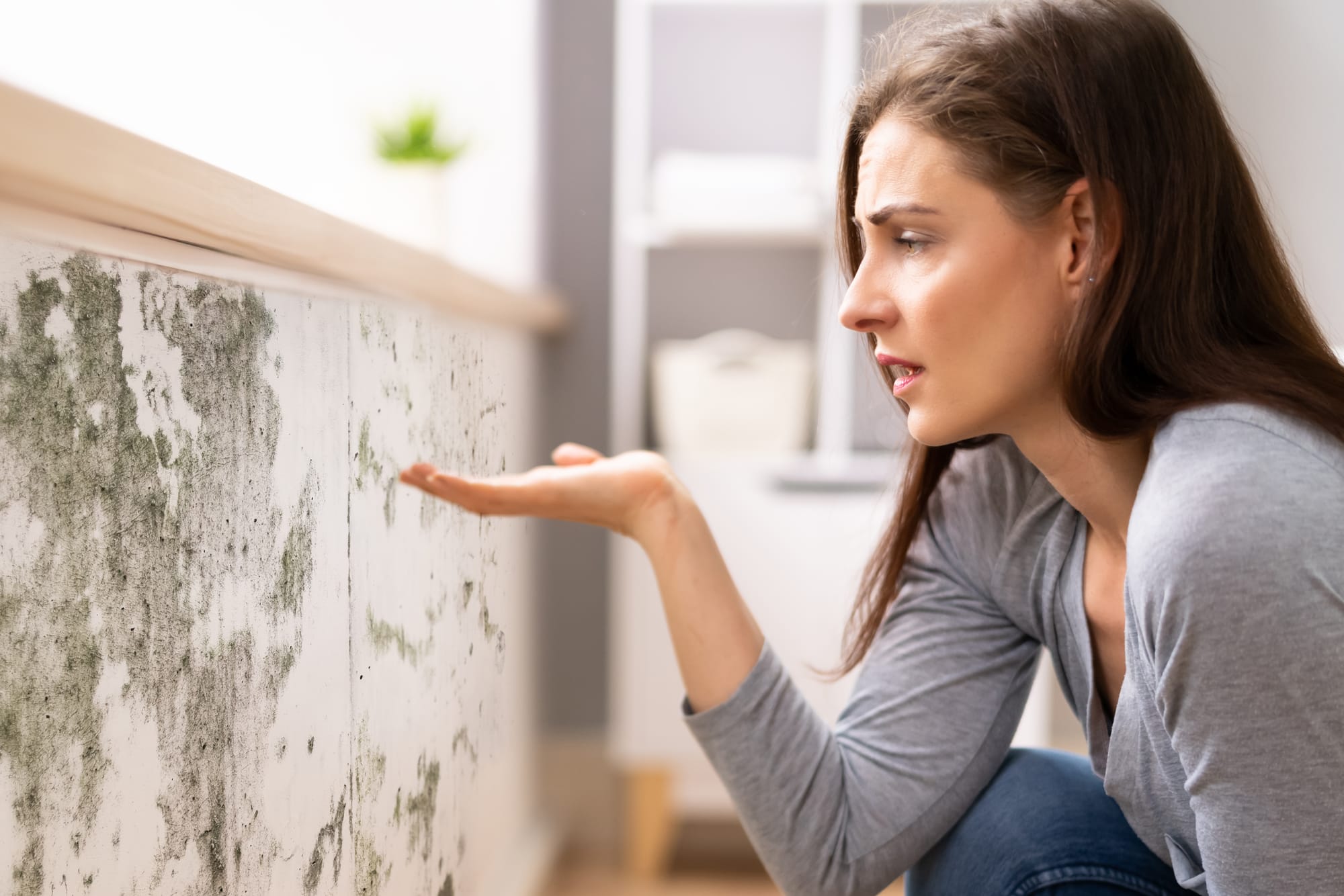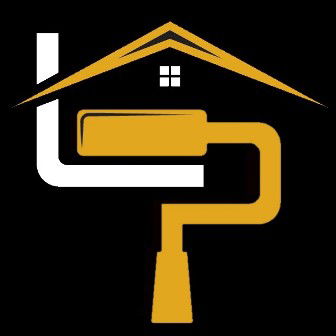Can You Paint Over Mold, What Happens?

Key Features
- Effective Mold Removal is Essential: Ensure mold is removed and the area is dry before applying paint.
- Mold-Resistant Paint Works Preventatively: Mold-resistant paints help protect surfaces but are not a cure for active mold.
- Value Preservation: Proper mold treatment protects a property’s value and appeal.
Painting Over Organics.. Good Idea?
Mold is one of those frustrating issues that can appear unexpectedly on walls and surfaces, often as a result of moisture or humidity. When people see mold, the immediate thought is often, “Can I just paint over it?” While this may seem like a quick fix, painting over mold can lead to serious problems down the line. Here’s a comprehensive guide on whether or not you should paint over mold, the risks involved, and how to tackle the issue properly.
Why Shouldn’t You Paint Over Mold?
Painting over mold may seem like a simple solution, but it doesn’t eliminate the problem—it just covers it up temporarily. Here’s what happens when you try to paint over mold:
- Mold Will Continue to Grow: Mold is a living organism that thrives in moist environments. Painting over it doesn’t stop its growth; it merely traps the mold behind a layer of paint. Mold will eventually break through, ruining the paint job.
- Health Risks Remain: Mold releases spores into the air, which can cause respiratory issues, especially in people with allergies, asthma, or compromised immune systems. Covering mold with paint won’t eliminate these health risks, as the spores continue to be released.
- Paint May Peel or Blister: Mold can disrupt the adhesion of paint, leading to peeling or blistering. If the mold problem persists, the newly painted surface will begin to show visible signs of damage, meaning you’ll end up redoing the job.
Things to Know
- Mold Can Continue to Grow Beneath Paint: Mold thrives in moisture-rich environments and will resurface if it’s not treated properly.
- Health Risks from Mold Spores Persist: Covering mold with paint won’t stop spores from affecting indoor air quality.
- Mold-Resistant Paint is Preventative, Not Curative: Always treat mold first—mold-resistant products work best on clean, dry surfaces.
What Are the Steps to Remove Mold Properly Before Painting?
- Identify the Source of Moisture
Mold won’t appear without moisture, so before you tackle the mold itself, figure out where the moisture is coming from. Common sources include leaks, high humidity, and poor ventilation. Fixing the source is essential to preventing the mold from coming back. - Gather Your Supplies for Mold Removal
Before you start removing mold, gather protective gear such as gloves, a mask, and eye protection. Mold spores can become airborne and potentially harmful if inhaled, so take proper precautions. - Use a Mold Removal Solution
You can find commercial mold removers, but a bleach solution (1 cup of bleach to 1 gallon of water) can work effectively on non-porous surfaces. Avoid using bleach on porous materials like drywall, as it may not penetrate deeply enough to kill all mold spores. - Scrub the Area Thoroughly
Apply the solution to the affected area and scrub with a stiff brush. Make sure to remove all visible signs of mold. After scrubbing, allow the surface to dry completely. - Apply a Mold-Resistant Primer
After the area is dry, apply a mold-resistant primer. These primers contain fungicides to prevent mold growth on the painted surface, adding an extra layer of protection against future mold.
What Happens If You Paint Over Mold Without Treating It?
If you choose to paint over mold without treating it, be prepared for potential consequences:
- Mold Regrowth: Mold will continue to thrive beneath the paint layer. Within weeks or even days, you may see discoloration, peeling, or black spots as the mold resurfaces.
- Potential Health Hazards: Even if you can’t see the mold, it continues to release spores into the air. This can worsen indoor air quality and lead to health risks for those who inhale the mold spores.
- Reduced Property Value: Mold issues can become major red flags for potential buyers. If a home inspection reveals untreated mold, it can reduce your property’s value or lead to costly repairs before a sale.
Should You Use Mold-Resistant Paint?
Yes, mold-resistant paint is a great preventative measure in spaces prone to moisture, like bathrooms and basements. However, mold-resistant paint should never be a substitute for properly removing mold. Think of it as a proactive choice after mold has been treated and removed.
| Type of Paint | Benefits | Limitations |
|---|---|---|
| Mold-Resistant Paint | Prevents mold regrowth, ideal for damp areas | Not a solution for existing mold |
| Regular Paint | Offers no mold prevention | Will not prevent mold, may worsen it |
How Can You Prevent Mold from Returning After Painting?
To ensure that your freshly painted surface remains mold-free, consider the following preventive measures:
- Improve Ventilation
Proper ventilation is crucial in moisture-prone areas. Install exhaust fans in bathrooms and kitchens, open windows when possible, and use dehumidifiers in damp areas to reduce humidity levels. - Reduce Humidity
Mold thrives in humid conditions, so aim to keep indoor humidity levels between 30-50%. Investing in a hygrometer can help you monitor humidity in your home. - Fix Leaks Promptly
Whether it’s a leaky pipe, roof, or window, address any water leaks immediately. Even a small drip can lead to mold growth if left unchecked. - Use Mold-Resistant Building Materials
If you’re doing a renovation, consider using mold-resistant drywall or insulation in areas susceptible to moisture. These materials are designed to inhibit mold growth.
What If Mold Reappears on a Newly Painted Surface?
If mold reappears after you’ve painted, it’s likely that the initial mold was not fully removed or that moisture levels are still too high. Follow these steps:
- Re-Evaluate the Moisture Source: Double-check for leaks or humidity issues that may not have been fully addressed.
- Remove the Mold and Repaint: Scrub away the mold, use a mold-resistant primer, and repaint. This can be time-consuming, but it’s essential for a long-term fix.
- Consider Professional Help: If mold problems persist, it may be best to consult a professional mold remediation specialist who can assess and fix the problem at its root.
In Our Experience
"We’ve seen firsthand that painting over mold without addressing the root cause only leads to more problems. It’s vital to treat the mold properly, use the right products, and ensure the area is well-ventilated. Once mold has been completely removed and a mold-resistant primer applied, you can paint with confidence. Ignoring mold or covering it up may save time initially, but it always ends up costing more in repairs down the line."
When Should You Call in a Professional?
If the mold problem covers an area larger than 10 square feet or if you experience respiratory symptoms from exposure, it’s wise to consult a professional. Large mold infestations can spread quickly, and professionals have the tools and expertise to handle extensive or difficult cases safely.
Is Painting Over Mold Ever a Good Idea?
No, painting over mold is not a good solution. While it may cover up discoloration temporarily, it doesn’t address the root problem, which is the moisture causing mold growth. Properly removing the mold, using mold-resistant primers, and reducing moisture levels are the only ways to ensure a mold-free surface that lasts.
Final Thoughts
Addressing mold the right way requires a bit more effort upfront, but it’s worth it for the health of your home and the longevity of your paint job. Proper mold removal, mold-resistant paint, and good home maintenance habits can keep your walls mold-free for years to come. Remember, paint is a beautiful finishing touch, but it can’t solve underlying mold issues on its own.
Do You Have Questions? Give Us A Call With Any & All! 503-389-5758
-
People Also Ask:
What primer should I use for walls with past mold issues?
A mold-resistant primer is the best choice for walls with prior mold issues, as it helps prevent regrowth.
Does mold-resistant paint really work?
Mold-resistant paint can help prevent new mold growth, but only if existing mold and moisture are addressed first.
Can painting over mold damage a home’s resale value?
Yes, untreated mold can affect resale value, as buyers may be wary of hidden mold issues.
-
SUBSCRIBE TO OUR BLOG: Stay informed with the latest in Painting and DIY projects by subscribing to Lightmen Painting. Get insights, tips, and more delivered straight to your inbox. We would also love to know what you would like to read about, leave thoughts on where we should go next. Interests, Topics, Ideas, all are welcome.
Get $3000 in personal assistant credits from Magic .com
^ Click Our Logo Above To Redeem ^
If your in the Portland, Or. area and need advice or a free no obligation estimate call us at 503-389-5758 or email scheduling@lightmenpainting.com
Shout Out:
Celebrating Fine Homebuilding: A Trusted Resource for Professional Contractors
From the team at Lightmen Painting, we extend our highest praise to Fine Homebuilding for providing a platform where contractors can discuss real-life challenges and share expert advice. Just as we are committed to excellence and transparency in our painting services, Fine Homebuilding fosters a community of professionals dedicated to quality craftsmanship and honest communication. Their focus on practical solutions and shared experiences aligns perfectly with our mission to deliver top-tier painting services with integrity.
Thanks for stopping by Lightmen Daily! Stay tuned for more practical tips and expert advice on making your painting projects flawless, from wall to floor!
Definitions
- Mold growth – The spread of mold on surfaces due to moisture, often appearing as black or green spots.
- Mold-resistant paint – Specially formulated paint that prevents new mold growth, ideal for bathrooms and basements.
- Bleach solution – A mixture of bleach and water used to kill mold on non-porous surfaces.
- Fungicide – A chemical agent in primers or paints that kills or inhibits the growth of mold and mildew.
- Ventilation – The process of circulating fresh air to control humidity and reduce mold risk.
- Dehumidifier – A device that reduces humidity in the air, helping to prevent mold in damp areas.
- Mold primer – A primer containing fungicides to prevent mold regrowth.
- Health risks of mold – Mold spores can cause respiratory issues, especially for those with allergies or asthma.
- Porous surfaces – Surfaces like drywall that absorb moisture, making them prone to mold growth.
- Moisture source – The origin of water or humidity that enables mold to grow, such as leaks or condensation.
Lightmen Painting Serving: Portland, Tigard, Lake Oswego, Tualatin, West Linn, Milwaukie, Sherwood, Happy Valley, Oregon City, Beaverton, Hillsboro, Gresham -Trade Partners-

